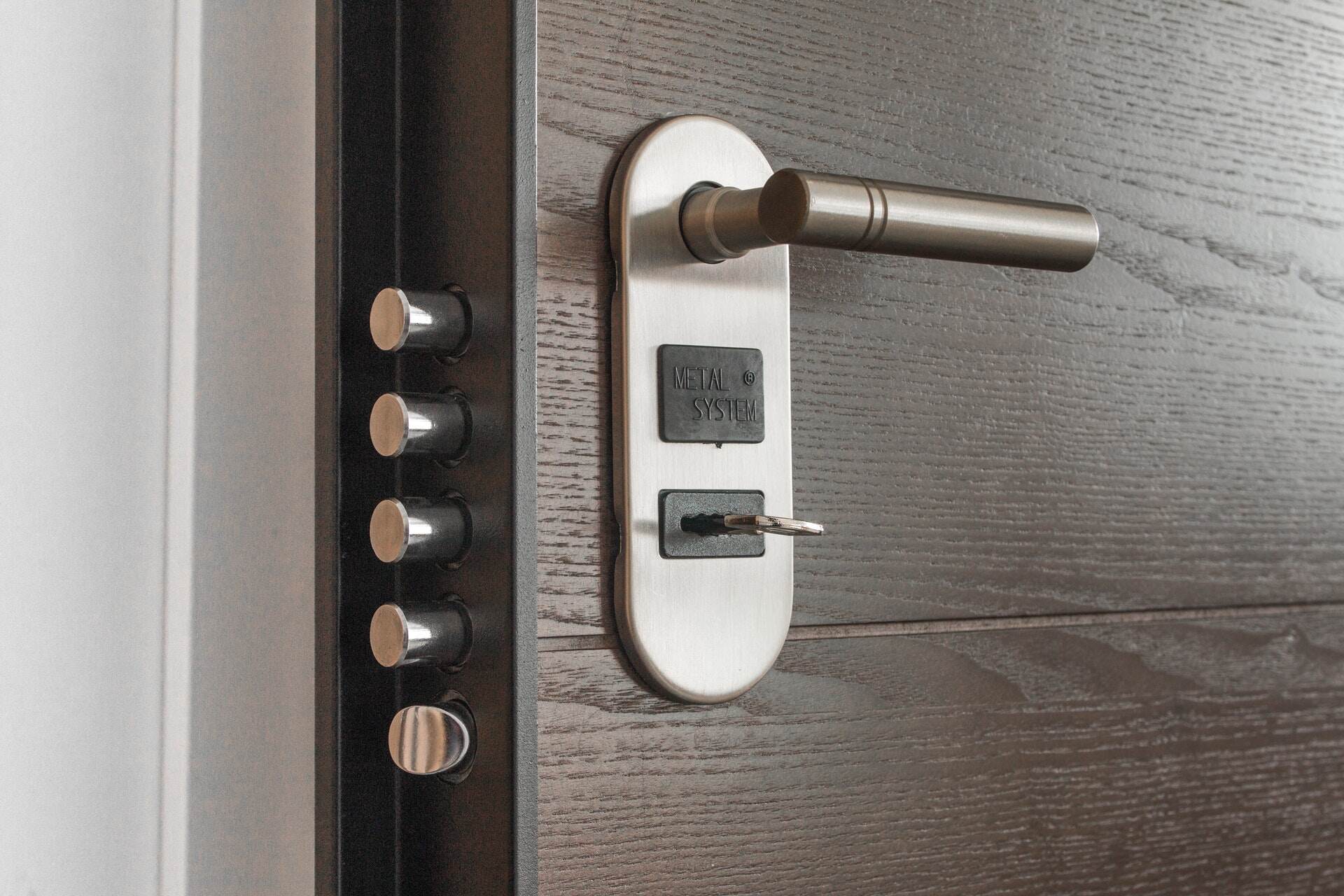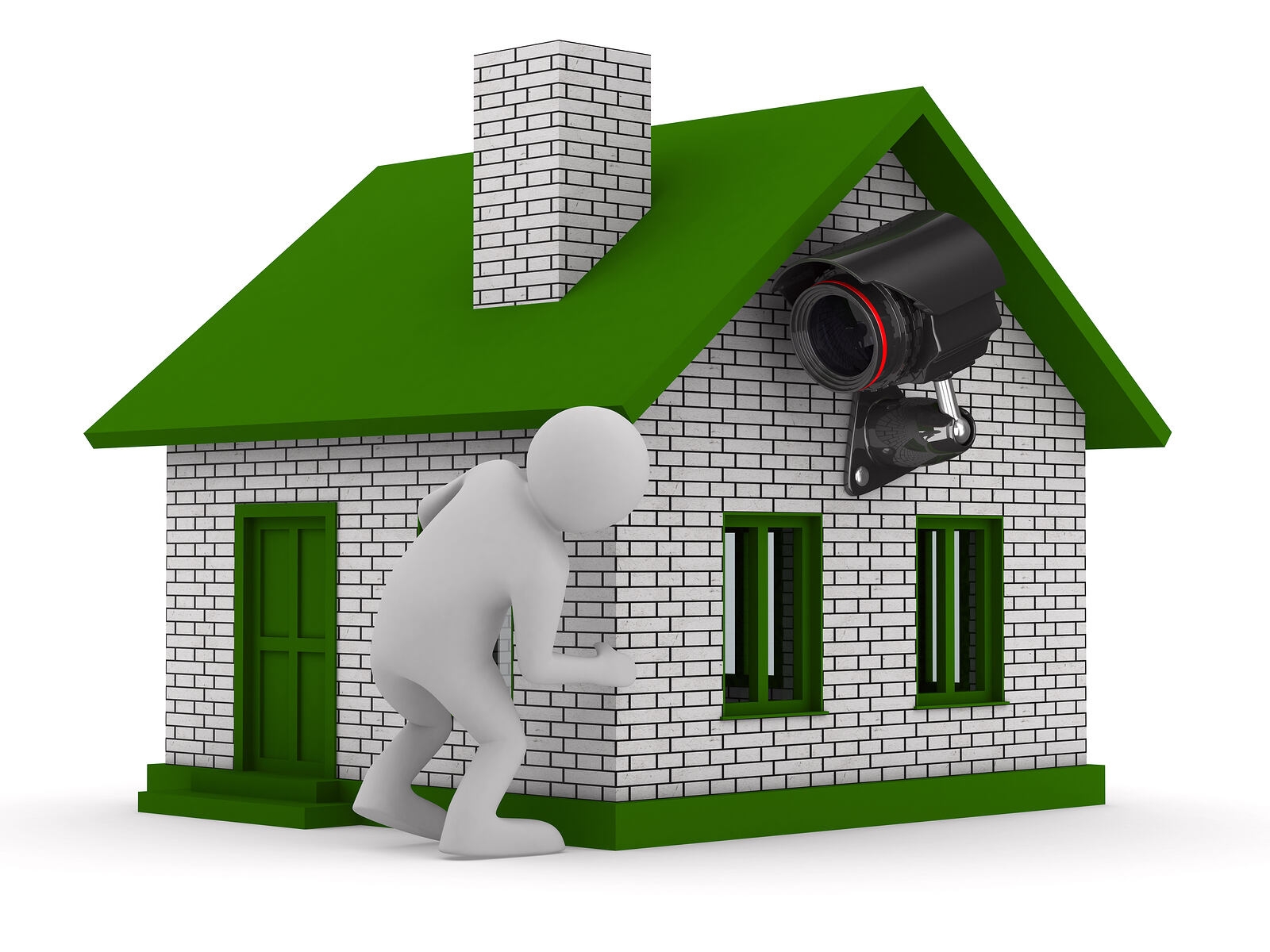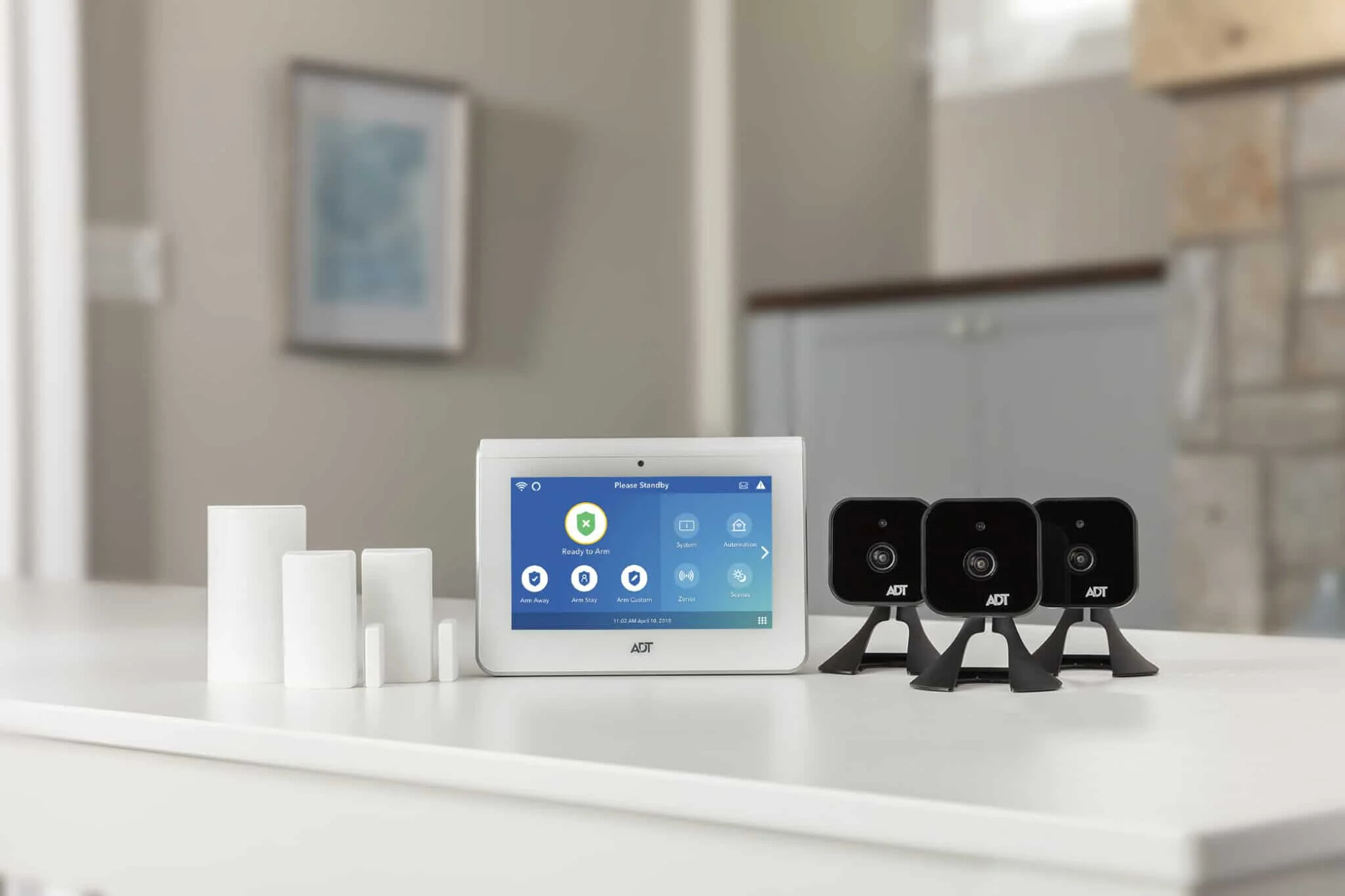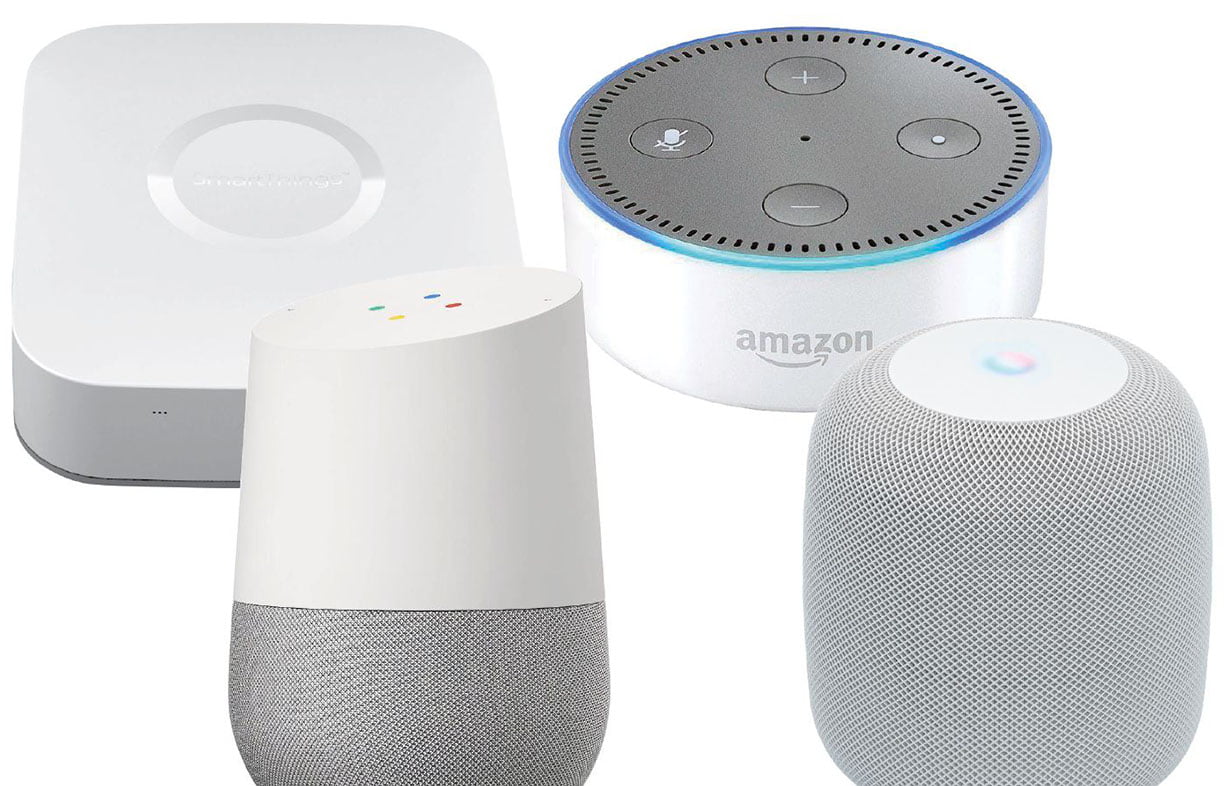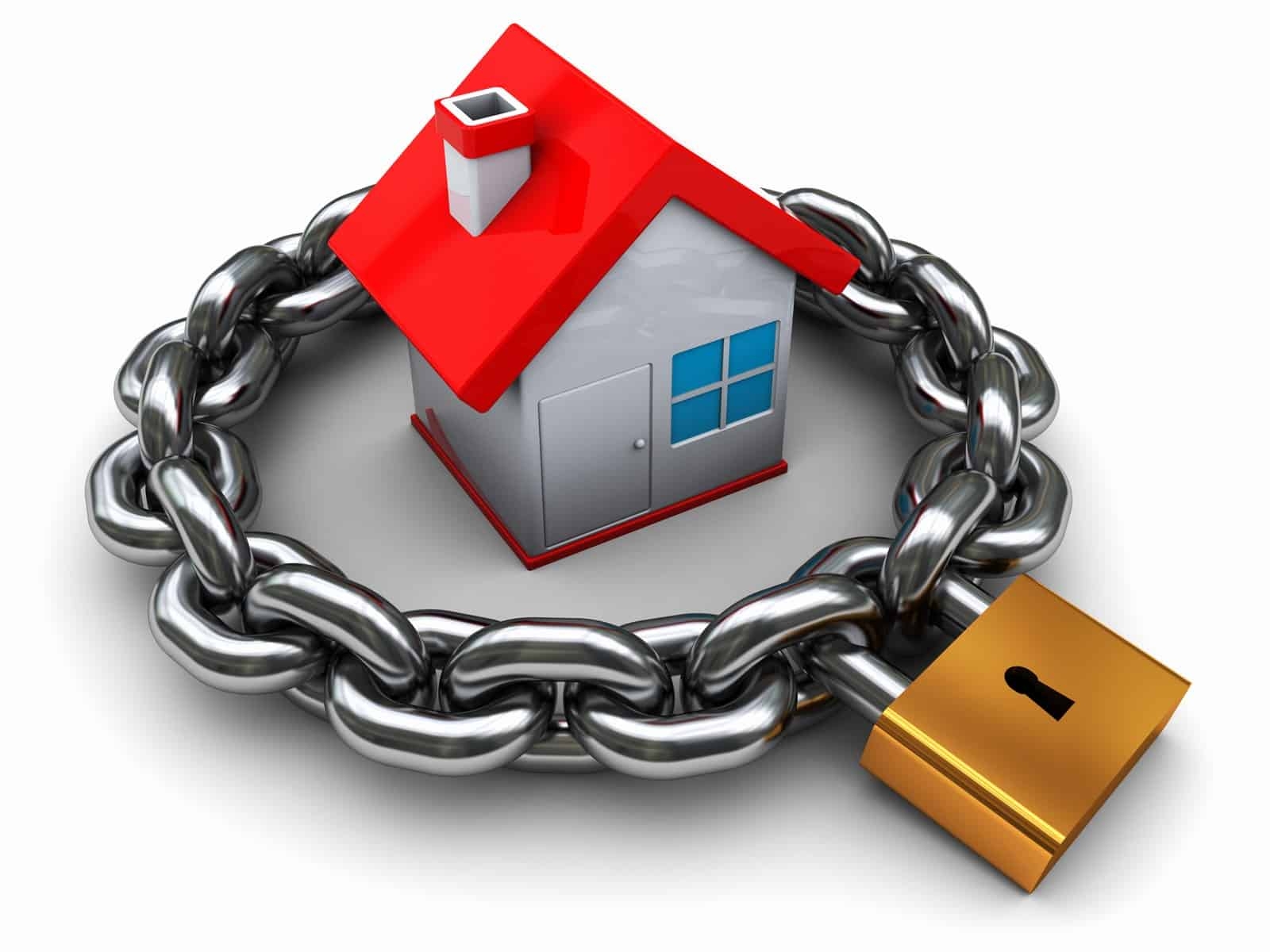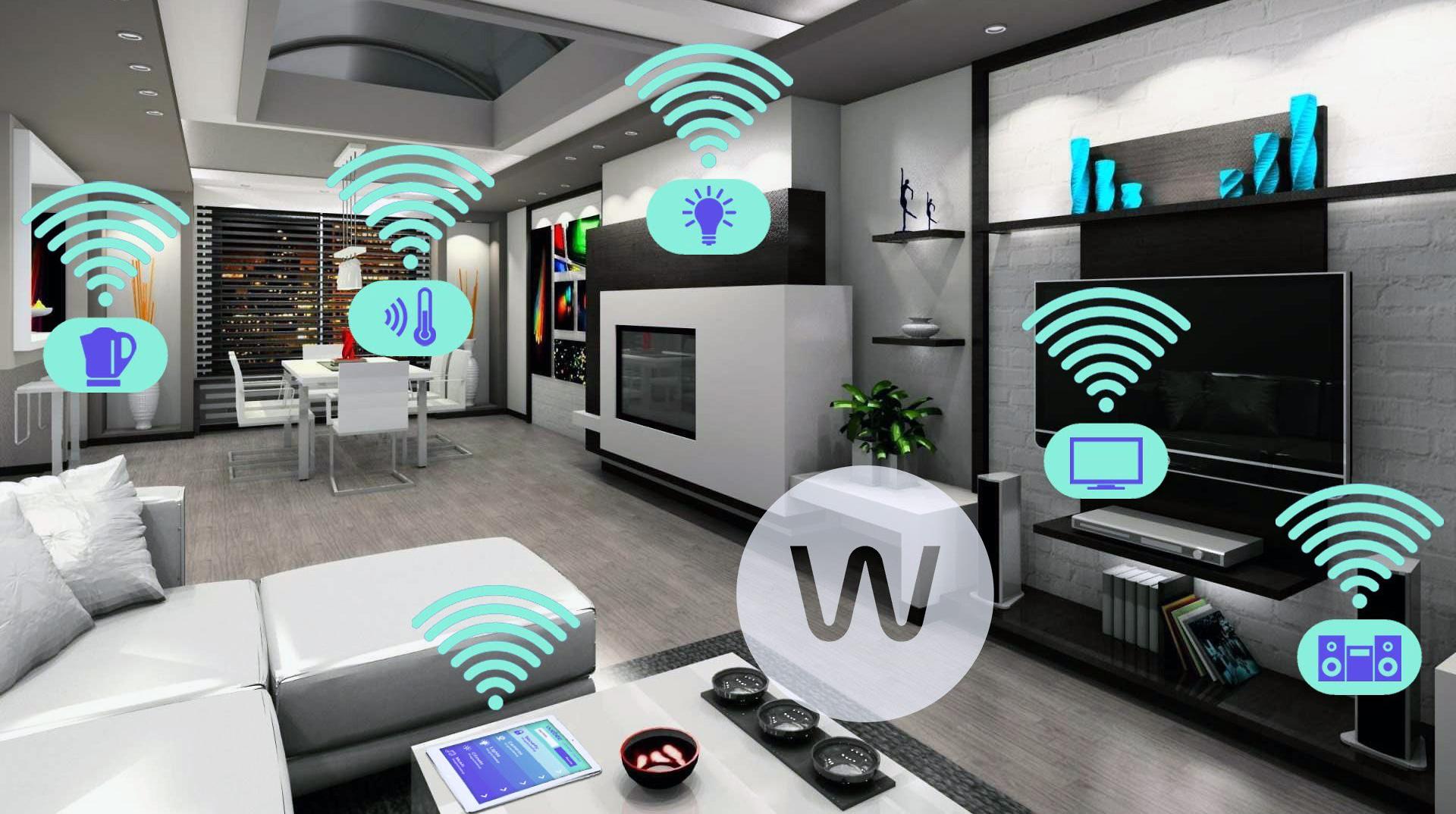Why Home Security is Important
Ensuring the security of your home is an essential step in protecting your family, valuable belongings, and personal well-being. With the increasing prevalence of burglaries and home invasions, taking proactive measures to enhance your home security is more crucial than ever. Here are a few reasons why home security should be a top priority for every homeowner:
- Peace of mind: Having a secure home provides you with peace of mind, knowing that your loved ones and possessions are protected. It allows you to relax, both at home and when you’re away, knowing that you have taken the necessary precautions to deter potential intruders.
- Crime deterrent: Homes with visible security measures, such as cameras, alarm systems, and robust entry point security, are less likely to be targeted by criminals. The presence of these devices can act as a strong deterrent, as criminals often look for easy targets.
- Protection for your family: Your home is a safe haven for your family, and it’s crucial to ensure their safety. Implementing a comprehensive home security system minimizes the risk of break-ins, providing a secure environment for your loved ones to live and thrive in.
- Preserving valuables: Burglaries can lead to significant financial losses due to stolen items. Protecting your valuable possessions, such as jewelry, electronics, and sentimental items, with security measures like safes, surveillance cameras, and secured entry points, can prevent these losses.
- Emergency response: Many modern security systems offer features such as monitoring services and alarms, which alert emergency responders in the event of a break-in or other emergencies. These rapid response systems can greatly reduce response time and potentially prevent further damage or harm.
- Insurance benefits: Taking steps to enhance your home security can often result in lower insurance premiums. Insurance companies recognize the reduced risk associated with well-protected homes and may offer discounts on your homeowner’s insurance policy as a result.
Investing in home security measures is not just a smart choice; it’s a necessary one. By prioritizing the safety and security of your home, you can enjoy peace of mind, deter potential criminals, protect your family and valuables, and potentially save money on insurance premiums. With the wide range of security options available today, there is something suitable for every homeowner’s needs and budget. Take the first step towards a more secure home by assessing your vulnerabilities and implementing the necessary security measures.
Assessing Your Home’s Vulnerabilities
Before implementing any security measures, it’s crucial to assess your home’s vulnerabilities to determine the areas that require the most attention. By identifying weak points, you can develop an effective home security plan. Here are some key aspects to consider when assessing your home’s vulnerabilities:
- Entry points: Start by examining all entry points to your home, including doors, windows, and garage doors. Look for any signs of wear and tear, gaps, or easy access points that could be exploited by intruders.
- Landscaping: Pay attention to your outdoor landscaping, particularly around windows and entrances. Overgrown shrubs or trees close to the house can provide cover for potential burglars, creating a potential security risk. Trim them to eliminate any hiding spots.
- Lighting: Assess the lighting around your property, both indoors and outdoors. Inadequate lighting can make it easier for intruders to approach your home undetected. Ensure that all entry points and exterior areas are well-lit to discourage unauthorized entry.
- Visibility: Consider the visibility of your home from the street and neighboring properties. If your home is easily visible, it can serve as a deterrent to potential burglars. If there are any obstructed views, such as tall shrubs, consider trimming them down to improve visibility.
- Security system: Evaluate the effectiveness of your current security system, if you have one in place. Check for any outdated or malfunctioning components that may need to be upgraded or repaired. If you don’t have a security system, now is a good time to consider installing one.
- Neighborhood: Assess the security of your neighborhood and any recent crime trends. Are there any specific security concerns in your area? Understanding the overall safety of your neighborhood can help you determine the level of security measures you need to implement.
- Valuables: Identify and take inventory of your valuable possessions. This will help you determine which areas of your home require the most protection. Assess how easily these items can be seen or accessed by potential intruders and take appropriate steps to secure them.
Remember, every home is unique, and vulnerabilities can vary. By carefully assessing your home’s vulnerabilities and addressing them, you can create a more secure living environment for you and your family. Take the time to implement necessary security measures and seek professional advice if needed. By doing so, you can significantly reduce the risk of a break-in and enjoy the peace of mind that comes with knowing your home is well-protected.
Installing Security Cameras
Security cameras are a vital component of a comprehensive home security system. They serve as both a deterrent and a means of surveillance, providing crucial video evidence in the event of a break-in. Installing security cameras at strategic locations around your property can significantly enhance the overall security of your home. Here are some key considerations for installing security cameras:
- Choosing the right locations: Identify the areas of your property that require the most surveillance. Common locations include the front entrance, back door, garage, and any other vulnerable areas. Place cameras at these points to capture any suspicious activity.
- Outdoor vs. indoor cameras: Determine whether you need outdoor or indoor cameras or a combination of both. Outdoor cameras should be weather-resistant, durable, and capable of capturing clear footage even in low light conditions. Indoor cameras can provide additional monitoring within the home.
- Wide-angle and night vision capabilities: Opt for security cameras with wide-angle lenses to maximize coverage. Night vision capabilities are also essential for clear footage in low-light or nighttime conditions.
- Wired vs. wireless: Choose between wired and wireless cameras based on your needs. Wired cameras typically require professional installation and are connected via cables. Wireless cameras offer more flexibility in terms of placement but may require batteries or regular charging.
- Remote access: Consider security cameras that offer remote access capabilities. This allows you to view the camera feed and control settings remotely through a smartphone, tablet, or computer. Accessible apps or software make it easy to monitor your home’s security from anywhere.
- Signage: Place visible signs indicating the presence of security cameras on your property. This serves as an additional deterrent to potential intruders, as they are less likely to target a home with visible surveillance measures in place.
- Recording and storage: Determine how you want to store the recorded footage from your security cameras. Options include on-site storage using a digital video recorder (DVR) or cloud-based storage. Regularly back up your footage to ensure it is not lost in the event of a system failure or tampering.
When installing security cameras, it’s important to follow the manufacturer’s instructions and consider professional installation if needed. Ensure that the cameras are placed at optimal angles and heights for maximum coverage. Regularly maintain and clean the cameras to ensure clear and uninterrupted footage. By investing in quality security cameras and strategically installing them around your property, you can significantly enhance your home’s security and deter potential intruders.
Securing Entry Points
Securing the entry points of your home is crucial for preventing unauthorized access and deterring potential intruders. By fortifying doors, windows, and other vulnerable areas, you can significantly enhance the security of your home. Here are some effective methods for securing entry points:
- Reinforce door frames: Install heavy-duty strike plates and reinforce door frames with metal plates to prevent forced entry through kick-ins.
- Upgrade locks: Replace standard locks with high-quality deadbolts, preferably those with a one-inch throw bolt. Consider using smart locks, which offer advanced security features such as keyless entry and remote access.
- Install window locks: Use window locks and secure sliding windows with a rod or track blocker to prevent them from being opened from the outside.
- Strengthen glass: Apply window security film to reinforce glass and make it more resistant to breaking. Consider using laminated or tempered glass for added protection.
- Install security bars: Use security bars or grilles on windows and sliding doors to add an extra layer of protection. Ensure they can be quickly released from the inside in case of an emergency.
- Use door and window sensors: Install door and window sensors that trigger an alarm if they are opened without authorization. These sensors can integrate with a home security system for added protection.
- Employ door and window reinforcement devices: Use reinforcement devices such as door jammers, door barricades, and window security film to add strength and resistance against forced entry.
- Consider a security screen door: Install a security screen door as an additional barrier at your main entrance. These doors are designed to resist tampering and provide ventilation while maintaining security.
- Use peepholes and intercom systems: Install wide-angle peepholes in exterior doors and intercom systems to verify the identity of visitors before granting entry.
- Secure the garage: Keep your garage secure by installing a high-quality garage door lock, reinforcing the entry door, and keeping the garage door closed and locked at all times.
Remember to consistently check the functionality of door locks, window latches, and any security devices you have installed. Regularly inspect and maintain all entry points to promptly address any vulnerabilities. By implementing these measures and keeping your entry points secure, you can significantly reduce the risk of unlawful entry and enhance the overall security of your home.
Reinforcing Doors and Windows
Doors and windows are common points of entry for intruders, making it crucial to reinforce them and make them more secure. By implementing various reinforcement measures, you can significantly enhance the security of your home. Here are some effective methods for reinforcing doors and windows:
- Install door and window sensors: These sensors are connected to your security system and will trigger an alarm if a door or window is tampered with or forced open.
- Upgrade to solid core doors: Replace hollow-core doors with solid core doors, which are more difficult to break through. They provide extra strength and security.
- Reinforce door frames: Install a heavy-duty strike plate and reinforce the door frame with metal plates to make it harder to kick in the door.
- Install a door viewer: Use a wide-angle peephole or door viewer so you can see who is on the other side of the door before opening it.
- Add a door barricade: Install a door barricade device that reinforces the door and prevents it from being forced open. These devices are typically easy to install and can provide an extra layer of security.
- Consider a security screen or storm door: Installing a security screen or storm door provides an additional barrier, making it more difficult for intruders to access your main door.
- Upgrade window locks: Replace flimsy or outdated window locks with high-quality locks that are more resistant to tampering or forced entry.
- Reinforce glass: Apply window security film to reinforce glass and make it more difficult to break. Additionally, consider using laminated or tempered glass for added strength.
- Install window security bars: Consider using window security bars or grilles to add an extra layer of protection. Make sure they can be quickly released from the inside in case of an emergency.
- Use window security devices: Utilize window security devices such as pins, bolt locks, or track blockers to prevent windows from being easily opened from the outside.
Regularly inspect the condition of your doors and windows to identify any potential weaknesses or damage. Ensure that all locks, sensors, and reinforcing devices are functioning properly. By reinforcing your doors and windows, you can create an additional layer of protection and significantly improve the security of your home.
Using Smart Home Technology for Security
Smart home technology has revolutionized the way we protect and monitor our homes. With the advancement of connected devices and automation, homeowners now have access to a wide range of smart security solutions that can enhance the safety and security of their homes. Here are some ways you can utilize smart home technology for improved security:
- Smart Locks: Replace traditional locks with smart locks that offer keyless entry and remote access control. You can monitor and control access to your home from anywhere using a smartphone app.
- Security Cameras: Install smart security cameras that provide high-resolution video footage, motion detection, and remote viewing capabilities. Many cameras offer features like facial recognition and two-way audio communication.
- Smart Doorbells: Consider installing a smart doorbell with a built-in camera and two-way audio. This allows you to see and communicate with visitors even when you are not at home.
- Smart Sensors: Use smart sensors to detect motion, door/window openings, and even environmental factors like smoke or carbon monoxide. These sensors can send you instant alerts to your smartphone or trigger alarm systems in case of a security breach.
- Smart Alarms: Invest in a smart alarm system that integrates with your smart home devices. These systems provide enhanced security features such as remote arming/disarming, customizable alerts, and integration with other smart devices.
- Smart Lighting: Use smart light bulbs or switches to create the illusion of an occupied home, even when you’re away. You can schedule lights to turn on and off or control them remotely for added security.
- Smart Security Hub: Consider using a smart home security hub that acts as a central control system for all your devices. This allows for seamless integration and control of various security components.
- Integration with Voice Assistants: Connect your smart security devices to voice assistants like Amazon Alexa or Google Assistant, allowing you to control them with voice commands and get real-time updates on your home’s security status.
- Remote Monitoring and Alerts: Many smart security systems offer remote monitoring and instant alerts. You can receive notifications on your smartphone whenever a security event occurs, allowing you to take immediate action.
- Home Automation: Use smart home automation to create routines and simulate occupancy. For example, you can program lights to turn on at specific times, close curtains, or turn on the TV to create the impression that someone is home.
Smart home technology offers convenience, control, and peace of mind when it comes to home security. By integrating these smart devices and utilizing their features, you can monitor and protect your home more effectively. Always ensure that your smart devices are properly set up, secured, and regularly updated to maintain the highest level of security for your smart home ecosystem.
Remote Monitoring and Alerts
Remote monitoring and alerts are integral features of modern home security systems. With advancements in technology, homeowners can now keep a watchful eye on their property and receive instant notifications of security events no matter where they are. Here’s how remote monitoring and alerts enhance home security:
- Real-time surveillance: Remote monitoring enables homeowners to view live video feeds from their security cameras and other connected devices in real-time. This allows for immediate visual confirmation of any suspicious or unexpected activity.
- Instant notifications: Security systems equipped with remote monitoring capabilities send instant alerts to homeowners’ smartphones or other connected devices when a security event occurs. These notifications can include motion detection, door/window breaches, or even environmental hazards such as smoke or carbon monoxide.
- Proactive response: Immediate alerts provide homeowners with the opportunity to take prompt action in the event of a security breach. They can contact the authorities or neighbors, remotely lock or unlock doors, or activate alarms to deter intruders.
- Peace of mind: The ability to remotely monitor and receive alerts provides homeowners with peace of mind. Whether at work, on vacation, or simply away from home, they can stay connected to their property and have the assurance that any security issue will be brought to their attention immediately.
- Recorded evidence: Remote monitoring often includes the option to record and store video footage from security cameras in the cloud. This not only allows homeowners to review past events but provides crucial evidence in the event of a break-in or other security incidents.
- Integration with other smart devices: Remote monitoring systems can be integrated with other smart devices and home automation systems. This means that homeowners can control and monitor multiple aspects of their home security, such as lights, locks, and thermostats, from a single app or interface.
- Peaceful vacations: Remote monitoring and alerts are particularly valuable when homeowners are away on vacation. They can relax and enjoy their time knowing that they will be promptly notified of any security concerns and can take action if necessary.
- Emergency response: In the event of a security breach or emergency, homeowners can quickly assess the situation via remote monitoring and inform emergency responders of the nature and severity of the incident. This can lead to faster response times and minimize potential damage or loss.
Remote monitoring and alerts empower homeowners to actively participate in their home security, even when physically absent. By leveraging these features, homeowners can stay connected to their property and take immediate action to protect their home, family, and possessions.
Setting up a Neighborhood Watch
A neighborhood watch program is a collective effort by residents to actively contribute to the safety and security of their community. By working together, neighbors can create a strong and vigilant network that deters crime and fosters a sense of community. Here’s how you can set up a neighborhood watch program:
- Initiate community interest: Start by gauging the interest and willingness of your neighbors to participate in a neighborhood watch program. Organize a meeting or create a group on social media platforms to discuss the idea and gather support.
- Establish leadership: Appoint or volunteer as a community leader or coordinator responsible for overseeing the neighborhood watch program. This role involves organizing meetings, distributing information, and acting as a point of contact.
- Coordinate with local law enforcement: Reach out to your local police department to inform them of your intentions to set up a neighborhood watch. They can provide guidance, share crime prevention tips, and even offer training for program members.
- Organize regular meetings: Schedule regular meetings, either in-person or virtual, to discuss neighborhood safety concerns, recent incidents, and preventive measures. These meetings encourage community engagement and foster a sense of unity.
- Develop communication channels: Set up a system for members to communicate and share information effectively. This can be a group chat, email list, or a dedicated website or social media group. Ensure that everyone has access to the chosen communication channel.
- Encourage vigilant behavior: Promote and educate members about the importance of being observant and reporting any suspicious activities to the appropriate authorities. Encourage members to look out for one another and their properties.
- Share information: Disseminate relevant crime prevention and safety information to members regularly. This can include tips on securing homes, recognizing scams, or identifying common patterns of criminal activity in the area.
- Organize community events: Plan community events that promote interaction among neighbors, such as block parties, neighborhood clean-ups, or safety workshops. These events help build relationships and create a stronger sense of community.
- Educate on home security: Invite professionals or local experts to educate members on home security best practices. Topics can include improving lighting, securing doors and windows, or utilizing smart home technology for increased safety.
- Establish neighborhood patrols: Encourage members to participate in neighborhood patrols, where they can keep a watchful eye on the community, report suspicious activities, and provide a visible presence to deter potential criminals.
A neighborhood watch program can significantly enhance the safety and security of a community by fostering a collaborative effort among neighbors. By setting up a neighborhood watch and promoting active involvement, you create a stronger community bond and deter potential criminal activity, making your neighborhood a more secure place to live.
Installing Outdoor Lighting
Outdoor lighting plays a vital role in enhancing the safety and security of your home. Well-placed and properly maintained outdoor lights can deter potential intruders, improve visibility, and create a more welcoming and inviting environment. Here are some key considerations when installing outdoor lighting:
- Assess your lighting needs: Begin by assessing the areas around your property that require lighting. Identify potential dark spots, paths, entryways, and other vulnerable areas that would benefit from illumination.
- Choose the right types of lights: Select outdoor lighting fixtures that are suitable for their intended purpose. Floodlights provide broad and intense illumination, while pathway lights or step lights offer a softer and more focused glow.
- Opt for motion sensor lights: Consider installing motion sensor lights in strategic locations. These lights will only activate when motion is detected, providing an extra layer of security and saving energy in the process.
- Position lights strategically: Place lights at key entry points, such as front and back doors, windows, and garage doors. Ensure that pathways, walkways, and driveways are well-lit to prevent accidents and discourage potential intruders.
- Utilize layered lighting: Create a visually appealing and functional lighting design by using a combination of ambient, task, and accent lighting. This will provide adequate illumination for different purposes while enhancing the aesthetics of your outdoor space.
- Consider solar-powered lights: Solar-powered lights are energy-efficient and environmentally friendly. They harness energy from the sun during the day and automatically light up at night, eliminating the need for wiring or additional electricity costs.
- Regularly maintain and clean lights: Keep your outdoor lights in good working condition by regularly cleaning them and replacing any burnt-out bulbs. This ensures optimal performance and extends the lifespan of your lighting fixtures.
- Install timers or smart lighting systems: Use timers or smart lighting systems to automate your outdoor lights. This allows you to program specific times for the lights to turn on and off, even when you’re away, giving the impression that someone is always home.
- Consider landscape lighting: Use landscape lighting to highlight and showcase the natural features of your property. Well-placed spotlights or accent lights can enhance the overall aesthetic appeal of your home’s exterior.
- Consult a professional: If you are unsure about the best placement or installation of outdoor lighting, consider consulting a professional electrician or landscape lighting specialist. They can provide expert advice tailored to your specific needs.
Installing outdoor lighting enhances the security and visual appeal of your home while providing peace of mind. It illuminates key areas, deters potential intruders, and makes your outdoor spaces safer and more inviting. Invest in appropriate outdoor lighting to create a well-lit, secure, and aesthetically pleasing environment around your home.
Safeguarding Valuables
Protecting your valuable possessions is an essential aspect of home security. Burglars often target homes with valuable items, such as electronics, jewelry, cash, and important documents. By implementing effective security measures, you can safeguard your valuables and minimize the risk of theft. Here are some key strategies for protecting your valuable possessions:
- Secure storage: Invest in a high-quality safe to store valuable items such as jewelry, cash, passports, and important documents. Ensure the safe is securely bolted to the floor or wall to prevent unauthorized removal.
- Hide valuable items: Keep valuable items out of sight from windows or other public view. Close blinds or curtains when you’re not at home to prevent anyone from seeing your valuables.
- Inventory and documentation: Create a detailed inventory of all your valuable possessions, including serial numbers, photos, and receipts. Store this information in a secure location or use online inventory management tools.
- Engrave or mark valuable items: Engrave or mark your valuables with unique identifiers, such as your driver’s license number or a unique code. This can help with identification and recovery in the event of theft.
- Keep a low profile: Avoid flaunting valuable possessions or making them visible from outside your home. Dispose of packaging discreetly, so it doesn’t attract attention to recent purchases.
- Install window coverings: Use window coverings such as blinds or curtains to prevent potential burglars from seeing inside your home and identifying valuable items.
- Inform trusted neighbors: Develop good relationships with your neighbors and inform them when you’ll be away for an extended period. Trusted neighbors can keep an eye on your property and alert you or the authorities to any suspicious activity.
- Home security system: Install a comprehensive home security system that includes features such as door and window sensors, security cameras, and alarm systems. The presence of a security system alone can act as a deterrent to potential burglars.
- Insurance coverage: Regularly review your insurance policy to ensure you have adequate coverage for your valuable items. Keep an updated inventory and notify your insurance provider of any significant changes or acquisitions.
- Consider off-site storage: For particularly valuable or irreplaceable items, consider utilizing off-site storage facilities. These facilities provide an additional layer of security for items that are not regularly used or needed.
Safeguarding your valuables requires a combination of physical security measures, smart practices, and appropriate insurance coverage. By implementing these strategies, you can have peace of mind knowing that your valuable possessions are protected, even in the event of a home security breach.
Creating a Home Security Plan
A well-defined home security plan is essential to ensure the safety and protection of your home and loved ones. By creating a comprehensive plan, you can identify potential vulnerabilities and establish protocols to prevent and respond to security threats. Here’s how to create an effective home security plan:
- Conduct a security assessment: Begin by evaluating your home’s security strengths and weaknesses. Assess potential entry points, lighting, landscaping, and existing security measures.
- Identify security needs and priorities: Determine your specific security needs based on your assessment. Consider factors such as the neighborhood, previous incidents, and your lifestyle. This will help determine the areas that require the most attention and resources.
- Establish a security budget: Determine a budget for implementing security measures. Consider costs for devices such as alarms, cameras, and locks, as well as ongoing expenses such as monitoring services and maintenance.
- Install security devices: Implement security measures based on your needs and budget. Install high-quality locks, security cameras, motion sensor lights, and alarms to protect your home’s entry points and the surrounding perimeter.
- Establish access control: Establish procedures for granting access to your home. Share keys and access codes only with trusted individuals and consider utilizing smart lock systems for added security and convenience.
- Create an emergency plan: Develop an emergency plan that includes protocols for natural disasters, fires, and intrusions. Educate your family on evacuation routes, emergency contacts, and response procedures.
- Educate family members: Ensure that all family members are aware of security measures and protocols. Teach them how to arm and disarm alarms, operate security devices, and recognize potential threats.
- Establish neighborhood connections: Foster connections with your neighbors and encourage community vigilance. Share information on suspicious activities, establish a neighborhood watch program, and collaborate on security measures.
- Practice good home maintenance: Maintain your property to deter potential burglars. Keep your yard well-maintained, ensure proper lighting, and promptly address any repairs or maintenance needs.
- Regularly review and update: Regularly review and update your home security plan as needed. Stay informed about new technologies and security trends to ensure your plan remains effective and up to date.
A well-rounded home security plan requires a proactive approach and ongoing diligence. By implementing security measures and establishing protocols, you can significantly reduce the risk of security incidents and create a safer environment for your home and loved ones.
Maintaining Security Measures
Once you’ve implemented security measures to protect your home, it’s crucial to prioritize the ongoing maintenance of these measures. Regular maintenance ensures that your security systems and devices remain in optimal working condition, maximizing their effectiveness in keeping your home secure. Here are some important steps to take when maintaining your home’s security measures:
- Test security systems and devices: Regularly test your security systems, including alarms, cameras, and motion sensors, to ensure they are functioning correctly. This ensures that they will work when you need them the most.
- Replace batteries: Check batteries in security devices such as door/window sensors, motion detectors, and smoke alarms. Replace old or weak batteries to ensure continued functionality.
- Check door and window locks: Inspect and test the locks on your doors and windows. Repair or replace any damaged or malfunctioning locks to ensure they provide the intended level of security.
- Inspect entry points: Regularly inspect all entry points, including doors, windows, and garage doors, for signs of wear and tear. Replace any damaged or weak components to maintain their security integrity.
- Update access codes and passwords: Change access codes and passwords regularly for keyless entry systems, security keypads, and smart devices. This helps prevent unauthorized access to your home.
- Review and update user permissions: If you have a home security system that allows for multiple user access, review and update user permissions as needed. Remove access for individuals who no longer require it.
- Keep outdoor lighting functional: Regularly inspect and replace bulbs in outdoor lighting fixtures to ensure sufficient illumination. Properly lit exteriors can deter potential intruders and improve overall safety.
- Maintain visibility: Clear any obstructions around security cameras, motion sensor lights, and windows. Trim overgrown shrubs or trees to maintain visibility and prevent potential hiding spots for intruders.
- Monitor system logs: If you have a smart home security system, regularly review the system logs to ensure there are no issues or suspicious activities. Contact your security provider if you notice any irregularities.
- Stay informed: Stay updated on the latest security technologies and trends. Research new products and features that may enhance your home’s security and consider incorporating them into your existing system.
Maintaining your home’s security measures requires consistent effort and attention. By regularly testing, inspecting, and updating your security systems and devices, you can ensure their continued effectiveness in protecting your home and providing peace of mind. Prioritize maintenance to keep your security measures operating at their full potential.
Final Thoughts on Home Security
Protecting your home and loved ones is a top priority, and a well-implemented home security plan is crucial in achieving that goal. By considering multiple layers of security, utilizing advanced technologies, and fostering a vigilant community, you can significantly enhance the safety and security of your home. Here are some final thoughts on home security:
Firstly, remember that no security measure is foolproof, but by implementing a combination of preventive measures, you can greatly reduce the risk of a security breach. Ensure you have strong physical barriers, such as robust locks, reinforced doors, and secure windows. Supplement these measures with advanced security technologies, such as surveillance cameras, motion sensor lights, and smart home automation systems.
A proactive and vigilant mindset is paramount. Encourage open communication and cooperation with your neighbors, form a neighborhood watch program, and stay informed about local crime trends. By working together, you can create a tighter-knit community that actively looks out for one another.
Regularly assess and update your home security plan to adapt to evolving threats and technologies. Stay informed about new security solutions and consider integrating them into your existing systems. Prioritize ongoing maintenance and testing of your security measures to ensure optimal functionality.
Remember that the goal of home security is to deter potential intruders and ensure the safety and well-being of your household. By implementing comprehensive security measures, utilizing smart technologies, and fostering a strong community, you can create a secure environment for you and your loved ones to thrive in.
Ultimately, investing in home security is an investment in peace of mind. By taking proactive steps to secure your home, you can rest easier knowing that you’ve taken measures to protect what matters most. Stay informed, stay vigilant, and make home security a priority in your life.







